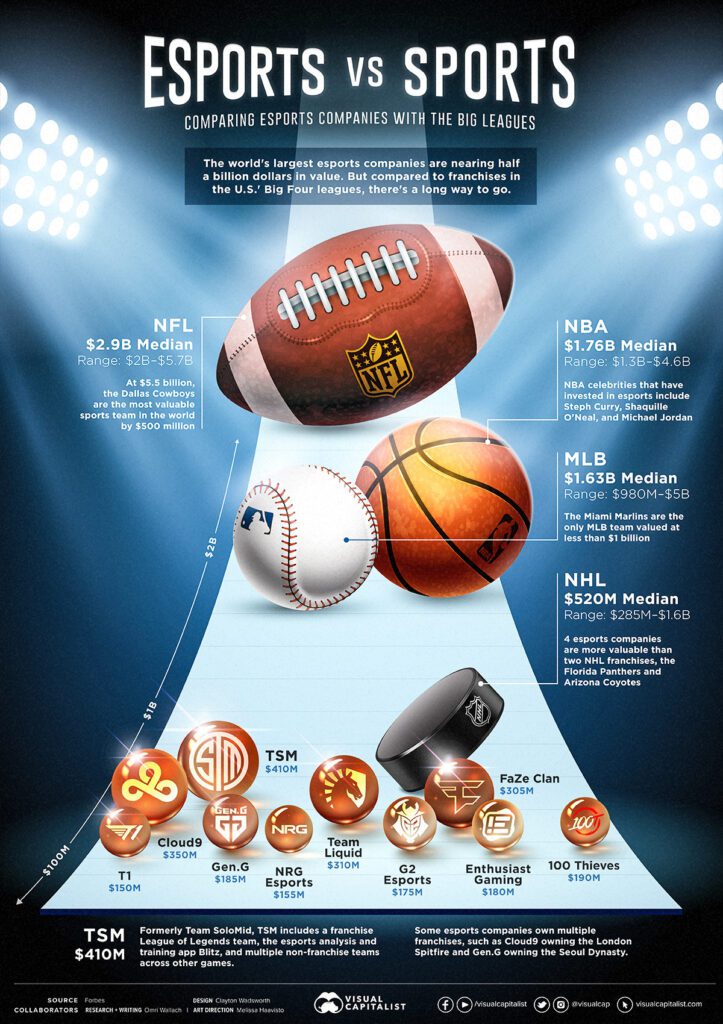Esports and traditional sports differ significantly in terms of physical involvement, required skills and strategies, teamwork and communication, as well as spectatorship. While traditional sports require athletes to engage in physical activities and develop specific skills, esports are played through input devices and require quick reflexes and decision-making skills. Both forms of competition require teamwork and communication, and while traditional sports attract large crowds for live matches, esports have a strong online presence with millions of viewers. As esports continue to grow in popularity, it will be interesting to see how it evolves against traditional sports.
Esports vs. Traditional Sports: A Comparative Analysis
Introduction
Esports is a form of competitive gaming that has been gaining popularity around the world in recent years. It involves professional players and teams competing against each other in various video games. The rise of esports has caused some to question whether it can be considered a legitimate sport, and how it compares to traditional sports.
Physicality
One of the most significant differences between esports and traditional sports is the degree of physical activity involved. Traditional sports require athletes to engage in physical activity, such as running, jumping, and throwing. Esports, on the other hand, do not require significant physical activity.
Esports players compete by using keyboards, mice, controllers, and other input devices. They may sit for extended periods, but their physical activity levels are typically low.
Skill and Strategy
Esports and traditional sports require different skills and strategies. In traditional sports, players must develop physical attributes such as strength, speed, and endurance. They must also have specific skills related to the sport, such as ball handling in basketball or running routes in football.
Esports require players to have quick reflexes, precise hand-eye coordination, and exceptional decision-making abilities. They must also develop specific team strategies, such as map control in a first-person shooter game or objective prioritization in a multiplayer online battle arena.
Teamwork and Communication
Both esports and traditional sports require teamwork and communication. In traditional sports, players must work together to achieve a common goal, such as scoring a goal or winning a game. They must communicate with each other, both on and off the field, to coordinate their efforts.
Esports players also require teamwork and communication to succeed. They must work together to achieve the objective of the game and must communicate effectively to coordinate their actions.
Competition and Spectatorship
Esports and traditional sports competitions differ in their spectatorship and the audiences they attract. Traditional sports have a long history of attracting large crowds to watch live matches. They also have dedicated television networks and streaming services that broadcast games to audiences around the world.
Esports competitions are often less physically accessible, with matches played online or at dedicated esports arenas. However, esports has a strong online presence, with millions of viewers watching live streams of matches on platforms like Twitch and YouTube.
Conclusion
Esports and traditional sports offer different challenges and rewards for athletes and spectators. While traditional sports require athletes to develop physical attributes and skills related to the sport, esports require players to have quick reflexes, accurate hand-eye coordination, and exceptional decision-making abilities.
Both forms of competition also require teamwork and communication, and each has a unique audience and spectatorship. As esports continues to grow in popularity, it will be interesting to see how it continues to evolve and how it compares to traditional sports in the years to come.
